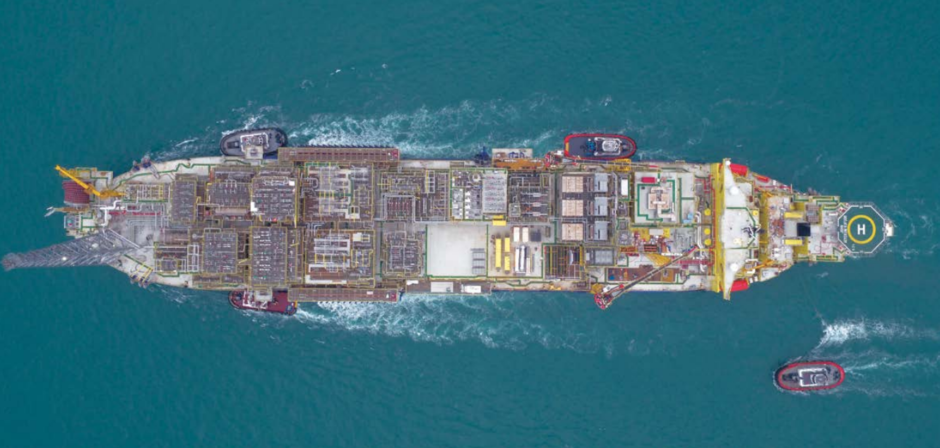
Ghana has made considerable progress in distributing power to its citizens, but talks are under way in order to make this process more sustainable.
Around 86% of Ghanaians have access to power. The National Electrification Scheme (NES) was launched in 1990, at a point when power access was estimated at 20%.
There are considerable resources. The Akosombo Dam project was completed in 1972 and generates around 900 MW. Hydropower accounts for about 64% of the country’s power generation.
Companies have made offshore gas finds in the last few years. These come in addition to the West Africa Gas Pipeline (WAGP), which brings gas from Nigeria.
There are challenges, though. “We are undertaking an ambitious reform programme to protect the future of the sector because, as it exists today, it is not financially sustainable. We are committed also to private sector participation in the Electricity Company of Ghana (ECG) in the distribution of electricity,” a government representative close to the sector said, pleading anonymity.
At the heart of Ghana’s plans for reforms, under the Energy Sector Recovery Programme (ESRP), is the aim of securing power at affordable prices for the country. The World Bank-backed ESRP runs from 2019 to 2023.
Moving the country beyond aid, as the government intends, “can only be achieved with a sustainable and cost-effective energy sector”.
The government is under pressure to demonstrate progress on this front. A presidential election is due to be held in early December. This will see President Nana Akufo-Addo square off against former president John Dramani Mahama. The two have run against each other repeatedly.
Dumsor
Ghana’s power sector has not been free of difficulties. The phenomenon of “Dumsor” has seen sporadic power outages. This has been driven by low water levels and problems with paying bills to Nigeria for gas.
Take or pay contracts have put pressure on Ghana, with the country still on the hook for power it cannot absorb. Costs related to take-or-pay agreements, generation tariffs and financing are passed to consumers in capacity charges, the government source noted.
“The ESRP will tackle these problems by optimising the installed generation capacity in order to provide a more efficient and cost-effective sector for all involved,” the official said.
The bill for excess power is estimated at $500 million. Installed capacity in mid-2019 reached 5,082 MW, while peak demand is 2,700 MW.
Demand is rising but not quickly enough to absorb this excess. The aim is to renegotiate deals with independent power producers (IPPs).
“The ESRP steering committee, together with the relevant ministries, departments and agencies in the energy sector are exploring options and negotiating comprehensive and collaborative solutions with each IPP,” the government official said.
Progress should be coming in the near term.
The aim is to allow all parts to flourish. Where private investors can grow and help meet local needs. “These reforms will ensure funds are well spent on projects that will drive forward the economy.” The official was reluctant to commit to a deadline for progress.
Sankofa
Gas is one of the sources of power for Ghana, in part driven by supplies from the offshore. The Sankofa project enshrines the country’s take-or-pay problems.
The deal was signed in 2015, when the country was struggling with power shortages. The agreement was backed by the World Bank with the aim of providing cleaner and more reliable power.
Financing of the Sankofa non-associated gas field involved commitments to an escrow account, to ensure payments to the producers. This was backed by a $500mn letter of credit, which was in term insured through a World Bank guarantee.
The price paid for Sankofa gas is also high. In mid-2019 this was reported to be $9.8 per million British thermal units. Under the 2020 budget, the benchmark gas price was projected to be $4.57 per mmBtu.
The current government, the New Patriotic Party (NPP), has been critical of the previous government’s signing of the deals.
Ghanaian Finance Minister Ken Ofori-Atta said the NPP had been forced to tackle the “exorbitant energy bill from expensive, difficult-to-explain ‘take or pay’ of Power Purchase Agreements; a pile up of unpaid arrears and outstanding commitments, mostly accrued from contracts awarded without the slightest care for the public purse”.
Gas uses
Talks are being held with “gas suppliers with a view to reducing the price of natural gas”, the source said, in response to a question on the Sankofa deal. Further, the government plans to develop and increase productive non-power uses for gas, for example, for fertiliser.”
Gas from the Eni-operated field began flowing to a floating power plant, owned by Karpowership, at the end of 2019.
There has even been some discussion of power exports. The government representative said Ghana was “working on increasing exports to Benin, Côte d’Ivoire, Burkina Faso and Togo, as well as ongoing arrangements in relation to supplying the West African Power Pool (WAPP), which will cover Liberia, Nigeria and Sierra Leone.”
Alternatives
Ghana is working to tackle its carbon emissions. The unnamed government source went on to note the country had signed a deal with the World Bank in 2019. This was intended to reward “community efforts to reduce carbon emissions from deforestation and forest degradation”.
There is scope for improvement in renewable energy. “The government plans to gradually diversify towards renewable energy sources (solar, wind and nuclear) in the medium term, and pursue low cost power delivery to the consumers,” the source said.
This will involve expansion of the country’s distribution system in addition to bolstering “mini-grid and off-grid applications to achieve this policy objective. This will also support the national goal set forth in Ghana’s Intended Nationally Determined Contribution (INDC) submittal dated September 2015, to scale up renewable energy penetration by 10% by 2030.”
Recommended for you

